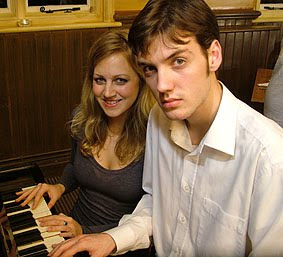 Having an onset photographer for at least one day of the shoot is not only a worthwhile investment, but with a bit of forethought can be extremely valuable. While you may think that any cast or crew member can take their own photographs at any time, there are some good reasons to have a dedicated photographer. They will (hopefully) know what they are doing and what to look for. And often the best shots will be when the cast and crew are too busy to be taking their own photographs!
Having an onset photographer for at least one day of the shoot is not only a worthwhile investment, but with a bit of forethought can be extremely valuable. While you may think that any cast or crew member can take their own photographs at any time, there are some good reasons to have a dedicated photographer. They will (hopefully) know what they are doing and what to look for. And often the best shots will be when the cast and crew are too busy to be taking their own photographs!All in all you want to make sure you have a photographer who can take decent images and understands what you need to get and their purpose. It often requires more standard framing rather than fancy or artistic flare. More importantly the resulting images need to be good enough for print, at a high resolution and professional standard for poster designs and other future multimedia applications.
 These can be divided into four basic types of photographs:
These can be divided into four basic types of photographs:1. Film stills
Film stills are photographs of the actual film, of the actors in character and costume, on location. You may well think that you can simply grab a film still from the actual completed film. But those 'frame grabs' are often never good enough quality -even at HD resolution- for what you will require for the poster or press kits. It is much better to have the photographer primed to shoot the actors either just before or after you have filmed the scene. The photographer we worked with, Bharat Ram (below), would also sometimes take the actors away when they are not required and pose them in a similar way to what he had seen us filming them, or ask them to get into character. He would also try lots of different poses unrelated to the film, but still in character, poses which could say for instance be used for the film poster.

2. Production stills
These are photographs of the cast and crew at work on location, of the equipment, of the sets, of the buildings and areas where we filmed. It is essentially a record of the behind-the-scenes process.

3. Mug shots
Head and shoulder shots of all cast and crew involved, useful for references, production notes and CVs etc.
 4. Continuity shots
4. Continuity shotsAn additional useage is for continuity -if you need to check how a location looked or what costume an actor was wearing at a particular time, photographs can be a valuable and irrefutable source of information.





No comments:
Post a Comment